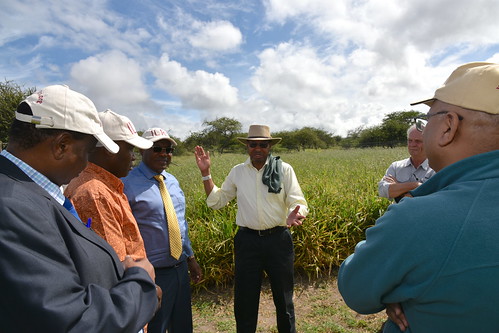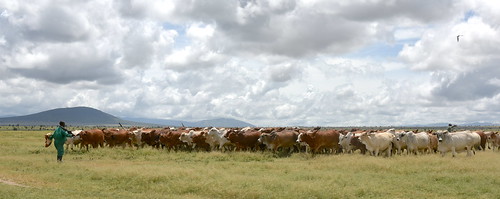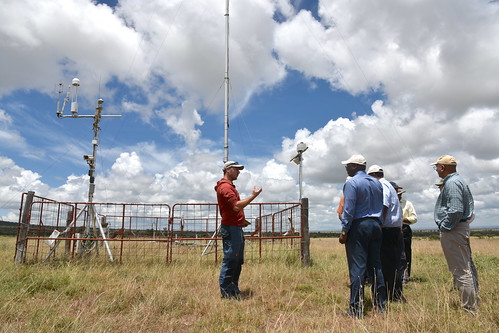Three senior Kenya government officials visited the International Livestock Research Institute (ILRI) Kapiti Research Station on 18 Mar 2020.
Ambassador Samuel Gitonga, director for diplomatic privileges and host country liaison affairs, and Harry Kimtai, permanent secretary for livestock and ILRI board member, visited the facility, which is in Machakos County, about 60 km southeast of Nairobi. They were accompanied by Julius Kiptarus, director of livestock production in the Kenya Ministry of Agriculture, Livestock and Fisheries and Cooperatives.
They were hosted by Jimmy Smith, director general of ILRI; Dieter Schillinger, ILRI deputy director general for biosciences; and other ILRI officials and researchers. During their visit, the visitors learned about the history and activities of the research facility from Smith and Ilona Gluecks, ILRI research facility manager. This was followed by a tour of various research sites and projects spread across the 13,000-hectare (32,000-acre) ranch.
In his introduction, Smith noted the rising demand for animal-source foods in Kenya and said that ILRI is partnering with the government, through the Kenya Ministry of Agriculture, Livestock, Fisheries and Cooperatives and other state institutions, to help Kenyan smallholders, who produce most of the livestock products in the country, become more competitive so that they can meet most of this demand in sustainable ways.
‘Our research is helping farmers better feed their animals, improve their genetic make up and ensure they are healthy’, he said. ‘The ongoing research at the Kapiti research facility and the laboratories at ILRI is enabling the sustainable production of more efficient, high-producing animals.’
The tour included a visit to the ILRI fodder research unit at Kapiti, where various types of Brachiaria grass varieties are being tested; a tour of the sheep unit and a visit to ILRI Mazingira Centre installations at the ranch, which are being used to assess the environmental impact of livestock production in a Kenyan rangeland.
Permanent secretary Kimtai said the visit helped him better understand the connection between the environment research data analysis at the Mazingira Centre at the ILRI campus and measurements in the field.
Ongoing research at Kapiti includes a Rift Valley fever vaccine trial on sheep, cattle and camels, which was developed by a Kenyan researcher at Oxford University’s Nuffield Department of Medicine; and the Mzima livestock project that is developing a ‘trypanotolerant cow’—cattle able to tolerate the disease known as ‘African animal trypanosomiasis’—similar to the genetic resistance to this disease inherent in the indigenous N’Dama cattle breed of West Africa.
The following are some pictures from the visit:
This visit follows a recent visit to Kapiti, earlier in March, by the Hon Alfred Mutua, governor of Kenya’s Machakos County.







Reblogged this on Mazingira Centre.